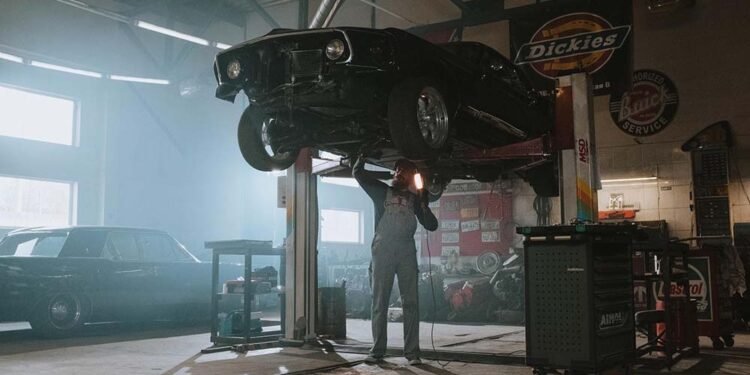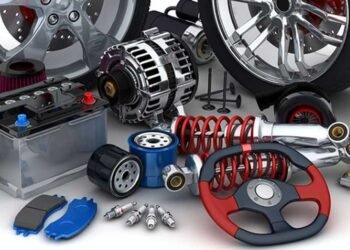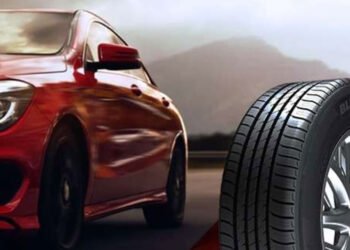Operating a towing vehicle can be both thrilling and nerve-wracking. Knowing some safety tips and techniques ahead of time will help ensure your travels are safe, smooth, and successful! This blog post will provide valuable information on how best to secure a trailer, tow it safely, and prepare yourself before hitting the road.
With these expert tips on towing safety, you’ll be ready for any adventure that comes your way!
Stay Within Your Limits
It is essential to accurately determine the towing capacity of your vehicle and understand proper weight distribution and tongue weight for successful trailer towing.
Knowing the towing capacity of your vehicle
Understanding your vehicle’s towing capabilities is essential when determining the safest and most efficient way to tow any trailer or load. This is largely because exceeding a vehicles’ towing capacity can lead to serious deaths, injury, and property damages.
To ensure you are staying within the limits of your vehicle’s capabilities, there are several factors that should be taken into consideration such as gross weight, braking power, axle weight rating and the type of hitch used for connecting the trailer or load.
Gross weight refers to both the total trailer or object being towed by car as well as its contents – including passengers. Properly assessing this number helps ensure a safe journey without overloading your vehicle with additional weight it cannot support.
The critical factor of braking power must also be kept in mind since if brakes do not work properly while going fast enough down hill then they can become unable to stop an overloaded truck or trailer combination; which could result in dangerous situations on account of speed control difficulties.
Furthermore axle weight ratings refer specifically to how much each individual wheel hub (each with a different capacity rating) will maintain before breaking under overload conditions.
Understanding weight distribution and tongue weight
When towing a trailer, it is important to understand and properly distribute the weight between your vehicle and the trailer. The two key metrics needed for proper trailer weight distribution are Gross Towing Weight (GTW) and tongue weight (TW).
GTW is the total weight of both the loaded trailer and its contents that is being towed by the vehicle. Tongue weight is the amount of pressure on the ball-mounted hitch caused by gravity from this combined load.
For optimal performance, you should aim for a recommended tongue weight of 10-15% of your GTW. Too much or too little TW can lead to dangerous issues like an unstable tow or inadequate braking power, which in turn increases risk of accidents when driving with a trailer.
Equipment and Trailer Safety
Ensuring that your trailer is properly hitched and secured, as well as double-checking the tire pressure, brakes, lights, cargo securement and other components before each trip can help ensure a safe towing experience.
Ensuring the trailer is properly hitched and secured
Before every towing trip, it is essential to ensure that the trailer is securely attached and properly hitched to the tow vehicle. This step should involve inspecting the hitch, coupler, drawbar, and other equipment.
All components must be firmly connected and tightly wauled in order for safe transport of your load. In addition to examining each piece of hardware connecting the trailer and tow vehicle, safety chains should also be used as a precautionary measure in case such connections fail or detach during transit.
The receiver hitch where all attachments are mounted requires proper adjustment of tongue weight so that any movements made while driving can more easily be absorbed by both vehicles; an improperly adjusted ball mount or trailer tires can increase risks associated with instability as well as potential accidents caused by negligence.
If you need help with vehicle towing of all kinds, you can get professional help from towing experts such as Towing Tucson, who help people with towing needs in the Arizona area. You can visit their website here at www.towingtucson.co.
Checking tire pressure and condition
When towing, it is important to ensure that the tires of a vehicle and trailer are properly inflated. Proper tire pressure affects both the safety and performance of your vehicle while on the road.
By checking the recommended inflation for each tire pressure you can greatly reduce your risk of blowouts or other tire related damage when towing. Tire charts help determine what pressure should be used in different temperatures, so make sure you check them before setting off on any journey.
Additionally, incorrect air pressure will result in overheating of sidewalls that can lead to irreversible structural damage resulting in impaired handling and ultimately endanger lives by causing car accidents.
Safe Driving Tips
Take extra care when driving with a trailer by making wider turns and allowing for longer stopping distances. Read on to find out more important safety tips!
Making wide turns and allowing for longer stopping distances
Trailers are typically longer and heavier than regular vehicles, creating bigger turning radiuses and requiring more distance for stopping.
Driving must be adjusted appropriately by slowing down, increasing the turning radius when maneuvering around corners, doubling following distances between you and the vehicle in front of you, allowing for additional braking time as well as giving yourself enough space to complete turns without hitting curbs or other obstacles.
The added weight also puts extra strain on the brakes, so it’s important to drive within your limits while taking into account how much cargo weight is being towed with the trailer.
If these safety measures are not followed correctly then it can easily result in an accident because of loss of control due to increased difficulty maneuvering as well as needing more braking power while traveling faster speeds–all factors that put everyone on the road at risk if left unchecked.
Being aware of the added length and weight while driving
When towing a trailer behind your vehicle, it is essential to keep in mind the effect that added length and weight can have on your driving experience. The increased physical size of the combined vehicles adds difficulty when maneuvering tight turns or reversing directions, significantly reducing maneuverability and requiring more room at high speeds.
Additionally, extra weight also affects how quickly you can stop; with a full load of cargo on board expect an increase in braking distance and time required to fully come to a stop.
To ensure safe operation it’s important for drivers to plan ahead by mapping out routes prior to each trip that take into account construction zones and low-clearance bridges or tunnels; gearing up with vehicle equipment such as mirrors that extend outward or cameras for improved visibility while reversing; and ensuring all trailers are well balanced in order minimize erratic behavior like swaying across lanes while traveling downwind.
Pre-Trip Checklist
Greasing the bearings
It is essential to regularly check and lubricate the wheel bearings on your trailer. Wheel bearings should be checked and lubricated every 12,000 miles or 12 months as neglected maintenance can greatly reduce its life expectancy.
When greasing your wheel bearings never over-pack them with grease which can increase drag and result in reduced efficiency of the bearing action. Additionally, adding too much grease can cause permanent damage to the rear if you do it through a bearing cap with a built-in grease fitting.
To prevent this kind of damage it’s recommended that proper precautionary measures are followed when applying grease through these fittings such as allowing excess pressure buildup before opening the valve again and thoroughly cleaning each surface section after application respectively.
Pinning the coupler
When towing a trailer, it is essential to pin the coupler of the tongue securely onto the hitch ball of your vehicle. This will ensure that there is a secure connection between your trailer and tow vehicle.
The coupler should have an adjustable latch or locking mechanism to further secure its position on the hitch ball. It’s important to verify if other safety measures are necessary; such as using a Coupler Locking Device which helps prevent theft and ensures added security from jolts in motion due to uneven roads.
Prior preparations like these can help you feel more confident traveling with your precious cargo behind you!
Leveling the trailer when loaded
Properly leveling your trailer is an important safety step to ensure the weight distribution of both the tow vehicle and the trailer are balanced. We’ve all seen what can happen when trailers are not evenly weighted — excess sway, poor stability, even disastrous accidents.
For this reason, it is essential for a safe and successful journey that you check your loaded trailer is properly leveled before leaving home. This means ensuring that the front of the trailer (the tongue) does not weigh down too heavily compared with its rear by simply using a spirit level or another device to measure angles accurately and adjusting accordingly.
Paying attention to weight balance will help prevent any undesirable shifting while in transit. Having heavier items centered and positioned low on the deck of your trailer also helps stabilize weight more effectively whilst reducing risk greatly! Doing these steps correctly significantly adds an extra layer of protection against unleveled loads as well as any possible damage down-the-road.
Inspecting the coupler and safety chains
It is crucial to check and inspect the coupler and safety chains between the towing vehicle and trailer before embarking on a long drive. A properly secured coupler should fit snugly over the trailer ball mount, while pulling up on it will ensure that there is sufficient locking security in place such that it does not come off unintentionally.
The safety chains should be connected with each other via criss crossing method beneath the coupler, so as to attach them with the towing vehicle secure enough for preventing further mishaps from occurring in case of an emergency disconnection of any sort.
This pre-trip inspection within trailers also includes checking tire pressure including wear/tear along with proper cargo securement as failure in performing such tasks may lead to catastrophic accidents making life even more vulnerable thus following essential guidelines prior driving gives you peace of mind knowing you have taken every possible step for your protection.
Using the proper size ball mount and trailer tires
Choosing the right size can be crucial when it comes to ensuring a safe and successful tow. The ball mount should match the size of the trailer’s coupler and provide enough clearance for hitching without damaging either piece.
Hitch balls come in three sizes: 1⅞ inches, 2 inches, and 2⅝ inches, so it is important to make sure you select one correctly proportioned for your particular set-up. Incorrectly sized hitch balls are the number one cause of trailer accidents because they can increase swaying or result in a loose connection between two parts that should fit together securely.
In addition, using tires with an incorrect diameter that aren’t suited to the load weight can put excessive stress on certain components leading to potential malfunction or breakdowns while making turns or stopping suddenly on highways.
Trailer tires also need careful consideration since they can vary widely in terms of load handling capabilities. Factors like vehicle type, tire types (highway vs all terrain), tread depth and wear levels should all be taken into account before making any decisions on what type to purchase.
Conclusion
Towing a trailer of any kind requires knowledge, proper equipment, and safe driving practices to ensure your safety. Knowing the weight limits of both your vehicle and trailer is paramount for securing a smooth experience.
It is also important to adjust your driving habits when carrying an extra load, taking wide turns and allowing for longer stopping distances. Lastly, maintain and inspect your equipment regularly; check tire pressure and condition before each trip as uneven tread patterns can lead to dangerous combinations when combined with other issues. If you ever need help towing a trailer or any type of vehicle, please contact us by visiting our website and requesting a towing quote. We’re always here to help!












